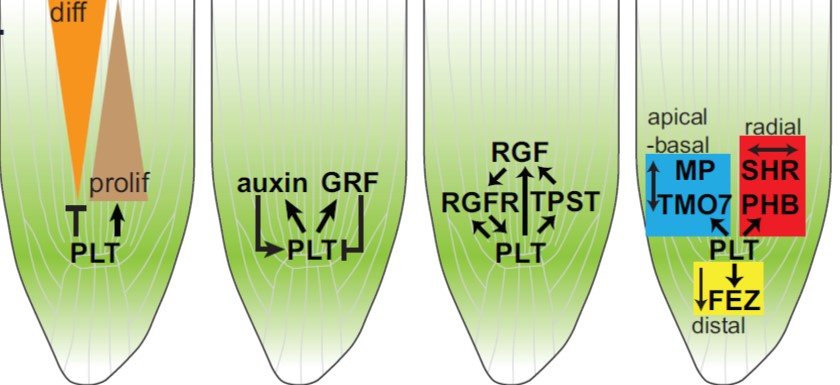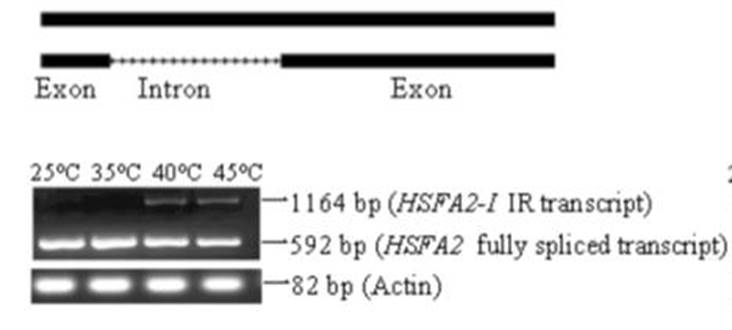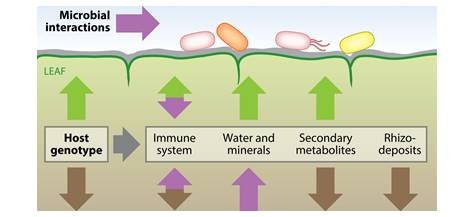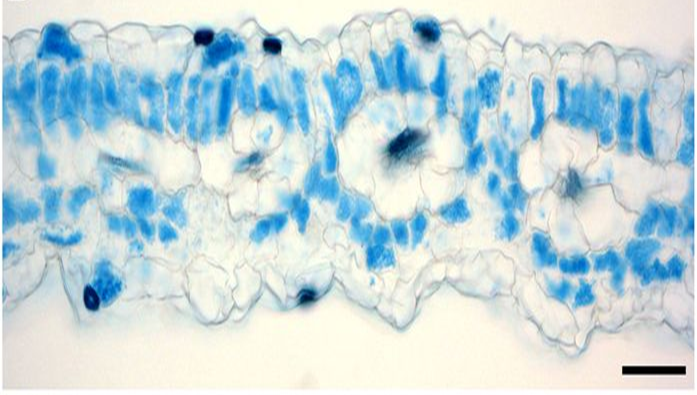
The PLETHORA Gene Regulatory Network Guides Growth and Cell Differentiation in Arabidopsis Roots
Plant Science Research Weekly, Research, The Plant Cell0 Comments
/
Due to plant cells’ shared walls and immobility, cell division, differentiation and expansion must be tightly regulated across space and time. The six members of the PLETHORA (PLT) transcription factor family distribute in gradients through the root tip and are largely responsible for its developmental…

Integrating omics reveals insights into grape response to high temperature
Plant Science Research Weekly, ResearchHeat stress is one of the main abiotic stresses plants encounter. Jiang et al. used combined transcriptomic and proteomic data to explore the responses of grape leaves to elevated temperatures (35, 40, 45°C). Using high-throughput sequencing and the iTRAQ (isobaric tags for relative and absolute quantitation)…

Genome sequence and genetic diversity of European ash trees
Plant Science Research Weekly, ResearchAsh dieback (a fungal disease) and the beetle Agrilus planipennis (a herbivore) are crushing ash tree populations in the Northern Hemisphere. To shed light on the genetic basis of the trees' susceptibility and to understand the genetic diversity of these trees, Sollars et al. have sequenced one individual…

A PNAS trio: DNA methylation and small RNAs in plant reproduction
Plant Science Research Weekly, ResearchThree PNAS papers explore DNA methylation and/or small RNAs in plant reproductive development. In angiosperms, sexual reproduction is accompanied by DNA demethylation in certain tissues, particularly those that have a nutritive or supporting role. Park et al. (10.1073/pnas.1619047114) show that in…

Review: History of Solanaceae family in genetic research
Plant Science Research Weekly, ResearchPlants from the Solanaceae family had, and continue to have, fundamental roles in plant genetic research. Gebhardt summarizes the historical contributions of the Solanaceous plants tomato, tobacco, petunia, potato, pepper, and eggplant. The tomato has been a model plant for studying fruit traits…

Evolution of fruit types in the Rosaceae family
Plant Science Research Weekly, ResearchThe evolution of fruits might have been the most important feature that made angiosperms so successful. Fruits protect seeds and contribute to seed dispersal, as well as comprise a food source for humans and other animals, therefore, studying their evolution would help us shed light on the evolution…

Review: The Plant Microbiota: Systems-Level Insights and Perspectives ($)
Plant Science Research Weekly, ResearchTerrestrial plants are hosts to diverse types of microbes, predominantly bacteria, that affect plant health and growth in numerous ways. The major types of plant microbiota include plant pathogens, arbuscular mycorrhizal (AM) fungi, endophytes (residing within plant tissues), epiphytes (residing on plant…

Best of 2016: Top Topics in The Plant Cell journal
Blog, Research, Research Blog, The Plant CellWe’ve highlighted some of the Plant Cell papers that were widely shared, liked, blogged, retweeted and otherwise garnered high-levels of attention this year. Perhaps you can use some holiday-season quiet time to catch up on those you missed.
Reviews and Perspectives
Creating order from chaos: epigenome…

Review: Endosperm and Imprinting
Plant Science Research Weekly, Research"The endosperm is often viewed as a complicated and rather strange tissue" begins this review by Gehring and Satyaki. They go on to describe that the endosperm is the site of expression of imprinted genes, which are genes that are expressed soley when inherited from the mother or father. The authors…

